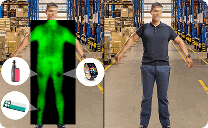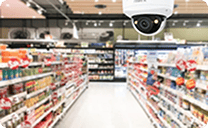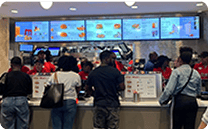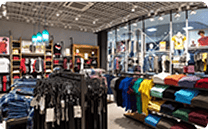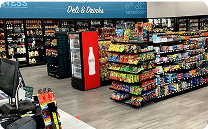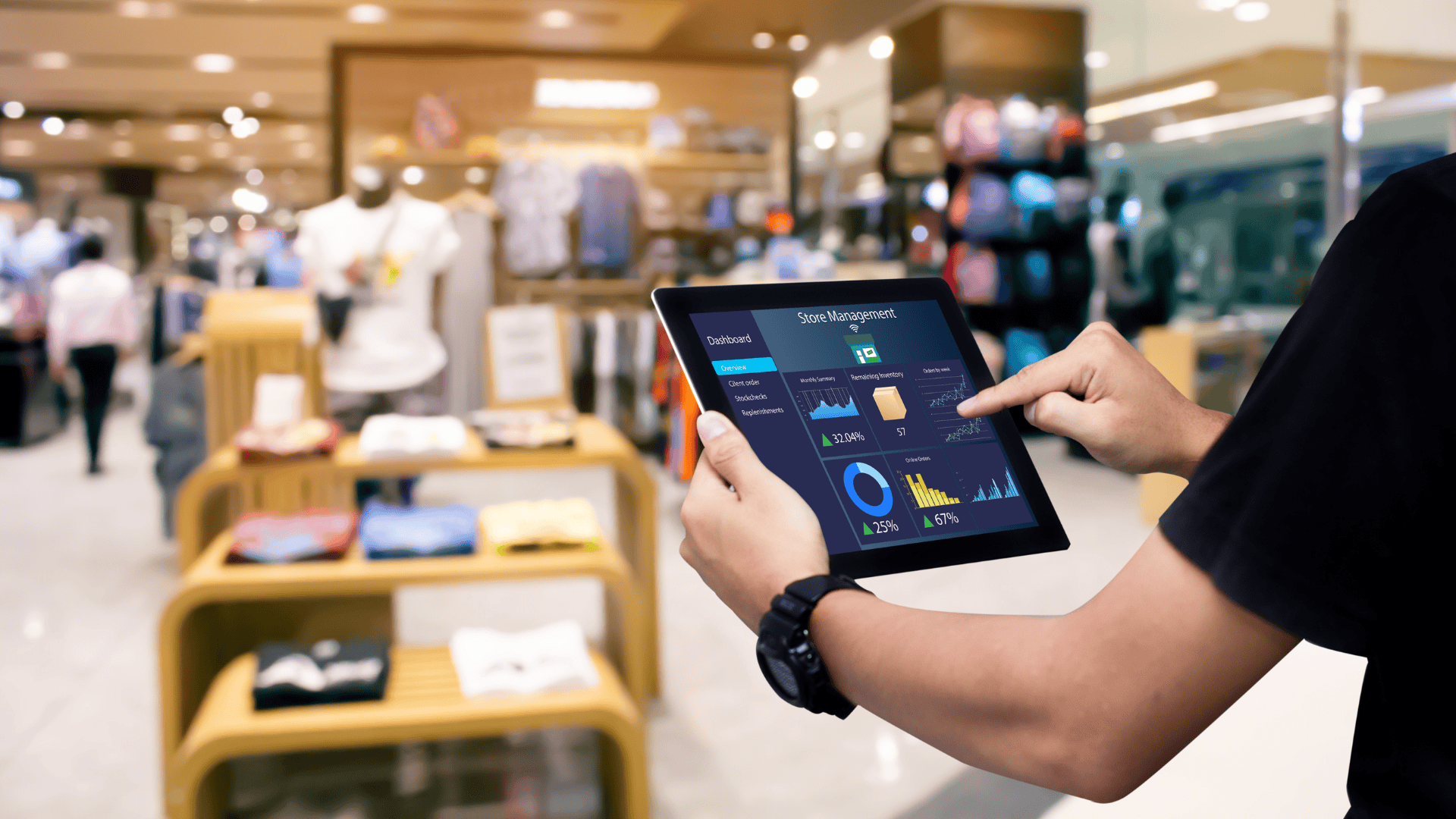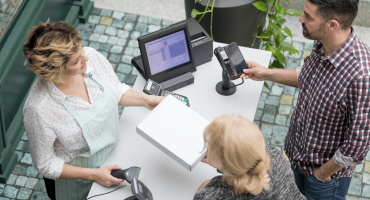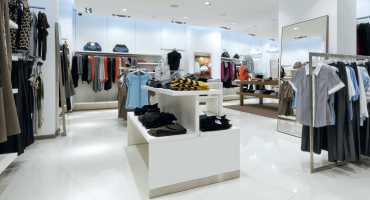In This article
How do you know how well your retail space is performing? One key metric that helps retailers assess this efficiency is Retail Store Sales Per Square Foot. This post will help you understand what this metric means, why it’s vital, how to calculate sales per square foot, and strategies to improve it.
The Importance of Sales Per Square Foot
Retail Store Sales Per Square Foot is a critical key performance indicator (KPI) that measures how effectively a retail space generates revenue. By understanding, tracking, and optimizing this metric, you can make more informed, data-driven decisions about your store layout, inventory management, and overall business strategy.
What Is Average Retail Sales Per Square Foot?
Definition: This metric calculates the average revenue generated for every square foot of retail space.
Significance: It provides insights into space utilization, helps identify underperforming areas, and aids in comparing your performance with industry benchmarks, which vary considerably.
- Luxury Retailers: Apple leads with approximately $5,500/sq. ft., while Tiffany & Co. averages around $3,000/sq. ft.
- Big Box Stores: Costco reports about $1,638/sq. ft., Walmart around $574/sq. ft., and Target approximately $300/sq. ft.
- Convenience Stores: Average around $330/sq. ft.
- National Average: Approximately $325/sq. ft. across all retail segments.
How to Calculate Sales Per Square Foot
Formula:
Sales Per Square Foot = (Total Sales) / (Total Square Footage of Retail Space)
Example:
If a store generates $1,000,000 in annual sales and has 2,000 square feet of selling space:
$1,000,000 / 2,000 sq. ft. = $500/sq. ft.
Considerations:
- Exclude non-selling areas like stockrooms or offices.
- Use consistent time frames (monthly, quarterly, annually) for comparison.
- Use tools such as Calculator Academy’s Sales Per Square Foot Calculator to check for accuracy.
Why Sales Per Square Foot Is a Crucial Retail KPI
Knowing your sales per square foot can benefit your retail operations in multiple ways.
- Inventory Efficiency: Helps you identify and prioritize the products with high sales density that generate the most revenue relative to the space they occupy.
- Space Utilization: Highlights underperforming areas to guide layout decisions and adjustments.
- Performance Benchmarking: Allows comparison with industry standards and your competitors.
- Profitability Insight: Reveals relationships between space usage and profit margins.
- Operational Adjustments: Inform your strategic marketing, merchandising, and staffing decisions.
Factors That Affect Sales Per Square Foot
Multiple elements contribute to your sales per square foot. Each also provides an opportunity to improve your overall performance. Leading contributors include the following.
- Product Assortment: Offering high-demand, high-margin products can boost sales density.
- Store Layout: Efficient, engaging, and attractive layouts improve customer flow and product visibility.
- Pricing Strategies: Competitive and strategic pricing and well-priced promotions can increase average transaction values.
- Staffing and Customer Service: Knowledgeable, personable, well-trained staff enhance customer experience and drive sales.
- Technology: Modern point-of-sale (POS) systems, self-service options, and analytics tools can streamline operations and provide valuable insights.
Strategies to Boost Sales Per Square Foot
Just as multiple factors contribute to your sales per square foot, there are numerous things you can do to boost your performance of this critical KPI.
- Optimize Your Store Layout. Design intuitive pathways and strategically place high-margin items and promotional displays to encourage purchases.
- Improve Your Inventory Management. Regularly assess product performance and adjust your stock levels accordingly.
- Enhance Your Customers’ Experiences. Offer personalized services, loyalty programs, and interactive displays.
- Incorporate Upselling and Cross-Selling. Train your staff to suggest complementary products to your customers and ensure your self-service options make similar offers.
- Leverage Digital Tools. Utilize data analytics to understand customer behavior and preferences.
- Make Seasonal Adjustments. Tailor your product offerings and promotions to seasonal trends and events.
Tools and Technologies to Track Sales Per Square Foot
The more accurate, comprehensive, and timely your sales per square foot information, the more effective your optimization efforts can be. Here are some valuable aids to those efforts.
- Point-of-Sale (POS) Systems: Track sales data in real-time, providing insights into product performance.
- Retail Analytics Software: Analyze customer behavior, sales trends, and inventory turnover.
- Foot Traffic Analytics: Use sensors and AI to monitor customer movement and optimize store layout.
- Inventory Management Tools: Ensure optimal stock levels and reduce carrying costs.
Case Study: Improving Sales Per Square Foot
- Initial Challenge: A retail store had a sales per square foot of $250, below the industry average. The store decided to implement strategic changes to enhance its performance of this critical KPI.
- Actions Taken:
- Redesigned store layout to improve customer flow.
- Introduced high-margin products and removed underperforming items.
- Trained staff on upselling techniques.
- Implemented a modern POS system for real-time data analysis.
- Results: Within 12 months, sales per square foot increased to $342, marking a 40% growth.
Common Pitfalls to Avoid When Measuring Sales Per Square Foot
As you pursue your journey to improved sales per square foot, there are three potential impediments you must make every effort to avoid.
Don’t overlook seasonal variations. Failing to account for seasonal sales fluctuations can skew your sales data and lead to inaccurate analysis.
Don’t ignore your customers’ experiences. Focusing solely on metrics without considering and enhancing customer satisfaction can cause you to make sub-optimal, inadequately informed decisions.
Don’t rely on inaccurate data. Incorrect measurements of sales levels or square footage can result in misleading conclusions.
Conclusion: Take Charge of Your Retail Store Sales Per Square Foot
Retail Store Sales Per Square Foot is a pivotal metric that assesses the efficiency and profitability of your physical retail space. Understanding and optimizing this metric is about more than numbers. It’s about making informed decisions that drive positive customer experiences, sales growth, and sustainability. By proactively managing and enhancing your Retail Store Sales Per Square Foot, you’re investing in your retail business’s long-term success and resilience. DTiQ’s 360iQ platform gives you the insights you need into customer behavior and store performance. To learn more, visit our website.
